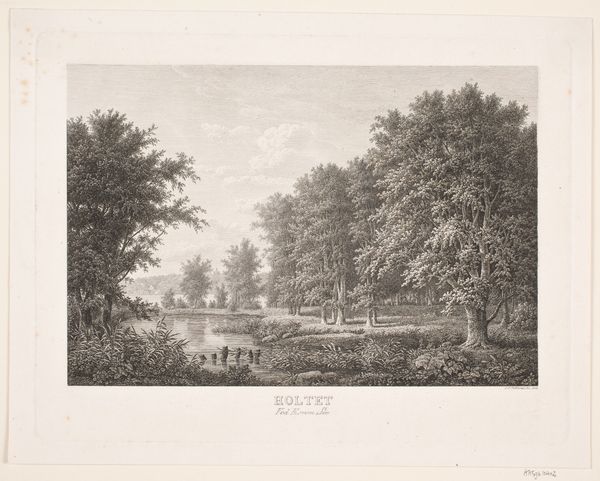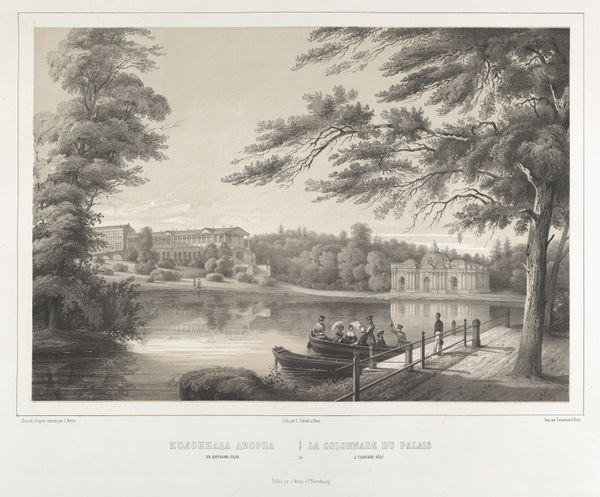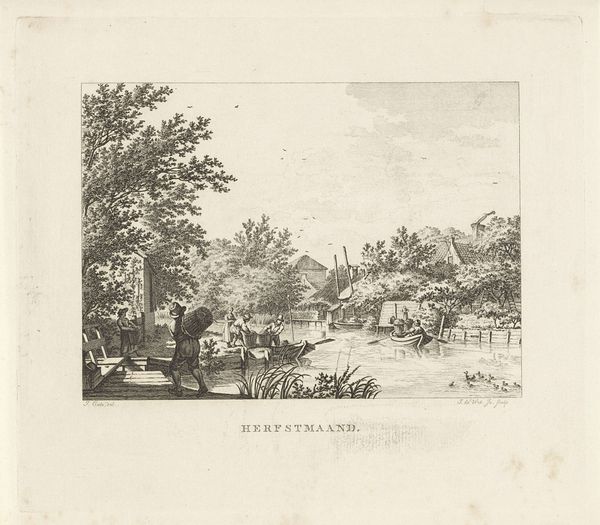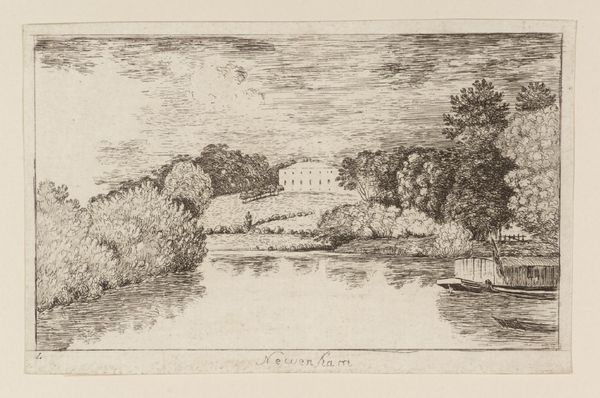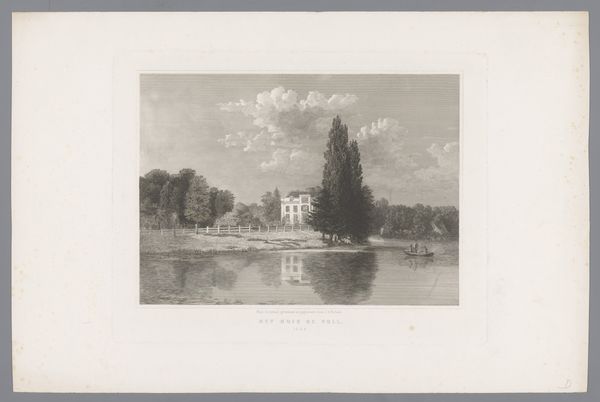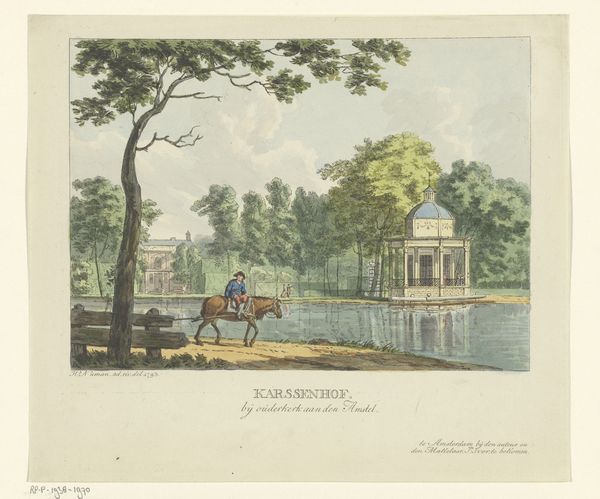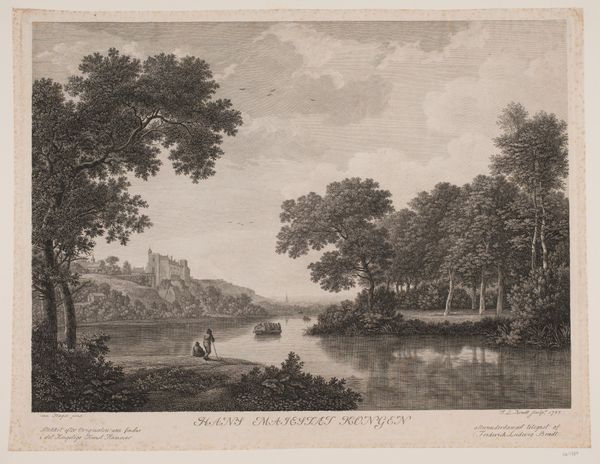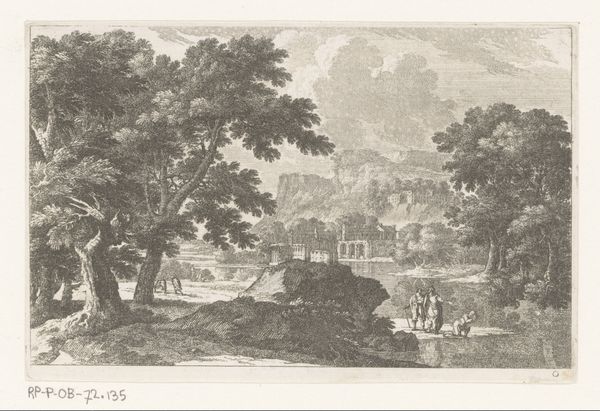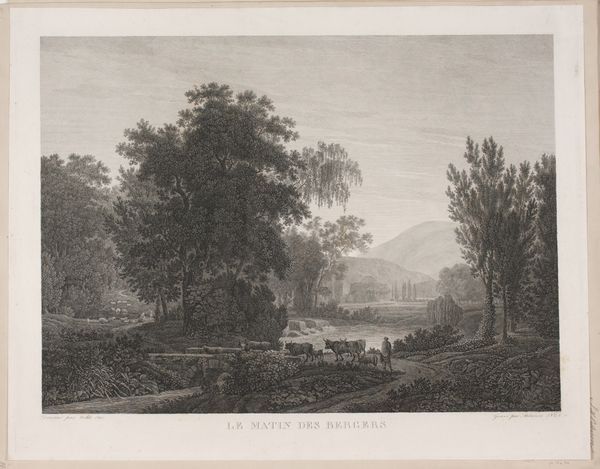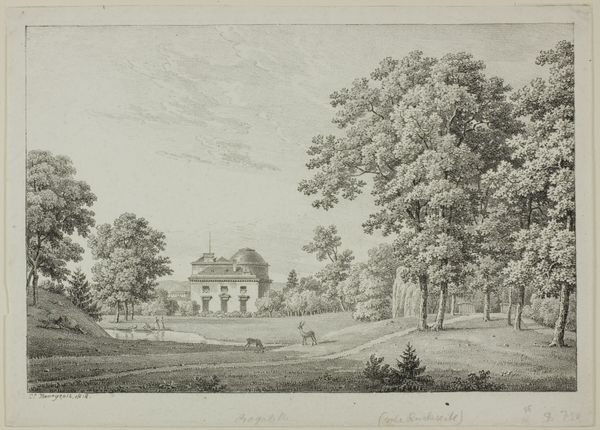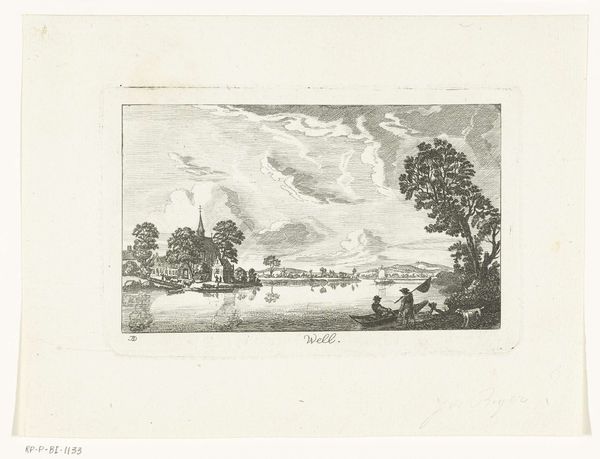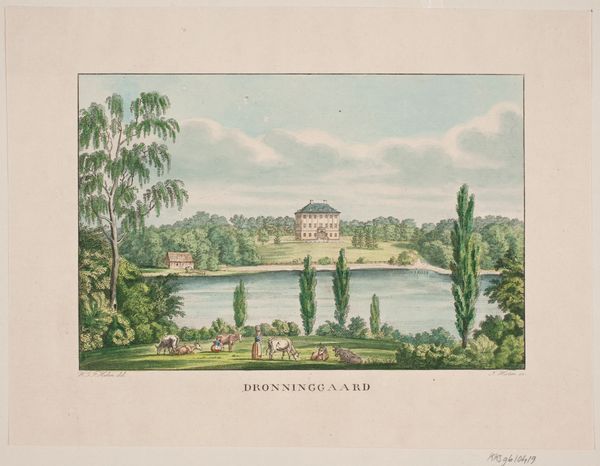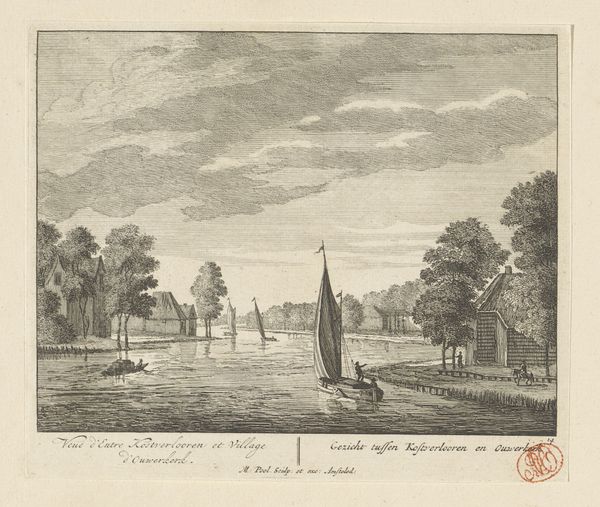
print, engraving
#
16_19th-century
#
neoclassicism
# print
#
landscape
#
park
#
engraving
Dimensions: height 107 mm, width 165 mm
Copyright: Rijks Museum: Open Domain
Editor: We’re looking at an engraving from 1847, titled "View of the Lazienki Park, in Warsaw." I believe the artist is anonymous. It shows a classical building reflected in a lake. The details achieved with just lines are really fascinating; how would you approach it? Curator: The means of production are interesting. Think about the engraver's labour - the skill, the tools. Each line meticulously etched onto the plate is evidence of their work. What socio-economic structures made the park and the print possible? Who consumed it, and why? Editor: That's true, it's a controlled process of mechanical reproduction intended for widespread distribution. Maybe the rising middle class who longed to experience aristocratic culture. The engraving depicts a leisure space with grand architecture. It highlights status through representation, doesn’t it? Curator: Exactly. We need to think beyond the pretty landscape. How did the creation of the physical park contribute to labour systems, and resource extraction, and what material consequences of landscape were produced? Where did the materials come from to build this idealized space and, subsequently, to create the prints which disseminate its image? Editor: So, not just what it depicts but the system of its making and the effects of its making on different classes. Curator: Precisely. Consider the distribution network for such prints. Its materiality - the paper, ink, the press itself- and who owned these means of production and distribution? This image is also tied to larger systems of trade and the creation of capital. What does looking at those historical details say about landscape as more than a purely "natural" or "artistic" space? Editor: I’d never really considered how the park’s image in the engraving would continue that circulation of capital…it becomes part of this machine through production of image and paper and ink. Curator: See? By interrogating the physical reality of its making, you have begun to question the power dynamics embedded within its aesthetic presentation. Editor: That gives me a new way to appreciate historical artworks. Curator: Indeed. Focus on the process and labor, and you unlock stories of access, production, and power structures.
Comments
No comments
Be the first to comment and join the conversation on the ultimate creative platform.
